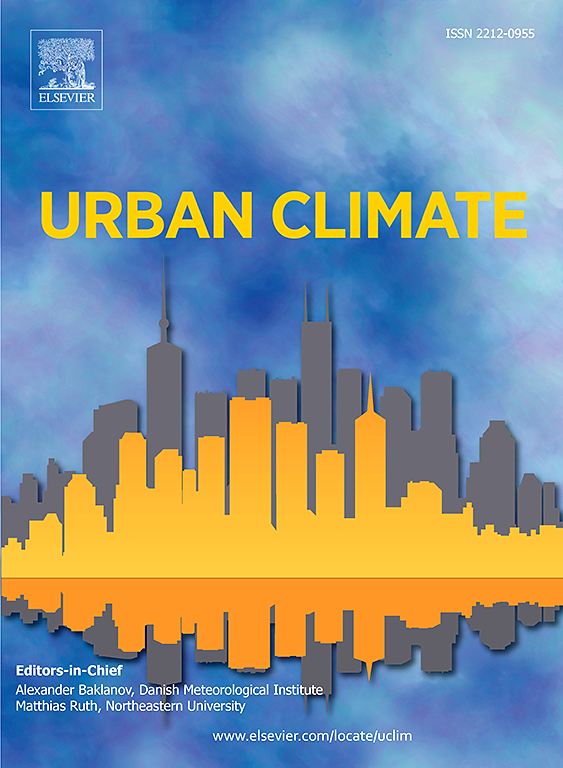Impact of urban land use and anthropogenic heat on winter and summer outdoor thermal comfort in Beijing
IF 6
2区 工程技术
Q1 ENVIRONMENTAL SCIENCES
引用次数: 0
Abstract
It is important to clarify the role of urbanization on outdoor thermal comfort (OTC) in regions threatened by both heat and cold. Quantitative studies on the impact of urbanization factors, including urban land use (LU) and anthropogenic heat (AH), on the winter thermal environment are lacking. This study conducted climate simulations using the Weather Research and Forecasting (WRF) model and optimized the relevant parameter inputs. Based on sensitivity experiments, it quantitatively analyzed the impact of LU and AH inputs on regional climate and OTC in Beijing during winter and summer. OTC was assessed using physiologically equivalent temperature (PET) and the universal thermal climate index (UTCI). The results indicate that urban LU significantly enhanced outdoor heat stress in summer, although the humidity-reducing effect of LU mitigated this impact partially. In contrast, LU caused notable temperature decreases and humidity increases in winter, which exacerbated the intensity of cold stress expressed by PET. It decreased by 0.32 °C during the daytime and 1.83 °C at night, despite lower wind speeds having an offsetting effect. The overall influence of AH was relatively subdued, consistently resulting in elevated temperatures and wind speeds, yet reduced humidity, with more pronounced effects observed during nighttime and winter. AH further intensified the heat stress induced by LU in the summer, whereas in winter it had a mitigating effect on the cold outdoor environment, but could not counteract the negative effects of LU at night.

求助全文
约1分钟内获得全文
求助全文
来源期刊

Urban Climate
Social Sciences-Urban Studies
CiteScore
9.70
自引率
9.40%
发文量
286
期刊介绍:
Urban Climate serves the scientific and decision making communities with the publication of research on theory, science and applications relevant to understanding urban climatic conditions and change in relation to their geography and to demographic, socioeconomic, institutional, technological and environmental dynamics and global change. Targeted towards both disciplinary and interdisciplinary audiences, this journal publishes original research papers, comprehensive review articles, book reviews, and short communications on topics including, but not limited to, the following:
Urban meteorology and climate[...]
Urban environmental pollution[...]
Adaptation to global change[...]
Urban economic and social issues[...]
Research Approaches[...]
 求助内容:
求助内容: 应助结果提醒方式:
应助结果提醒方式:


